For this week’s Featured Contributor Friday, we’re interviewing Trisha Hughes from Eat Your Beets. You may know Trisha for her incredible Paleo and gluten-free recipes, or her eye catching food photography. What you may-or-may not know is Trisha is a wife, mother, second-to-none multitasker (she managed to hold a conversation while chasing her dog during this very interview), and raised her youngest child on the GAPS diet.
Keep reading to hear Trisha’s tips for photography, starting the GAPS diet, and what she has in store for the upcoming year. And for more on Trisha, be sure to follow her on Facebook and Instagram!
Let’s start from the beginning. When did you learn to cook? How did you make the transition to a real food lifestyle?
In college, I started to change what I was eating. I studied theater, and had plans to move to LA to work in the industry. When I told a professor about my plans, he said, “That’s a great path for you, but you’re going to have to lose 15 pounds.” At the time, I was 5’7 and weighed less than 130.
Like many college girls, I had a history of making unwise choices in the name of being thin. I was cast in a show where I essentially wore lingerie the entire play, and started working out a lot and watching what I was eating. On campus, I heard about veganism, Atkins, you name it—and started looking for “the best” way to eat.
When I met my husband, he took me on dates all the time. Dining in was easier on a college budget, so I thought, “Wow I really like this guy, maybe I should learn to cook!” I used the internet to find recipes, and made the most amazing dishes. I was cooking in a college kitchen and owned next to nothing—I can remember just bashing this Ziploc bag of almonds because I was determined to make Almond Crusted Halibut!
Want to see what Trisha feeds her real-food family? Check out her amazing recipe collection on Primal Palate!






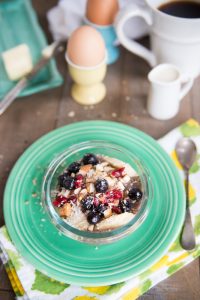



You dabbled in vegetarianism and veganism before switching to Paleo. Can you tell us what lead to that decision?
We [my husband and I] moved to England, which has a great food culture. People only shop for a few days’ worth of food at one time, they own smaller refrigerators, and grocery stores take special care with dietary labels. This was over a decade ago, yet I could easily find things marked for vegetarian or vegan diets.
When I became pregnant, I thought I was going to become a vegetarian. Instead, I used being pregnant as an excuse to eat everything. I gained seventy pounds that first pregnancy, weighing almost 200. After I had my son, I had to figure out how to lose it. That’s when I went back to cooking, eating better, and exercising more.

I always felt vegan and vegetarian were the best ways to eat. Those were the only “alternative diets” I ever heard of. It wasn’t until we moved to Japan where I heard otherwise. I was having lunch with a friend, and she said, “Meat is healthy.” Never, ever, had anyone told me meat was healthy.
My friend encouraged me to read Nourishing Traditions. It was the most revolutionary thing I’d read in my entire life. I thought back to all the times I tried to switch to being a vegetarian (i.e. while pregnant). Perhaps this explained why I could never sustain it.
After reading Nourishing Traditions, how did you make the leap to Paleo?
Around that time, I was introduced to Crossfit. As you know, Crossfit and Paleo go together like peanut butter and jelly. I did a lean-up challenge with my gym, through working out and doing Paleo diet. I did a Whole30, and felt the best I’d felt in my entire life. I tell people all the time, “You don’t know how good you can feel, until you know how good you can feel.”
I feel like I am the perfect science experiment. I constantly re-evaluate what makes me feel best. I’ve gone to extremes with all diets, but always swing back to a middle gray area where I feel best.
Being in touch with how I’m feeling is so important. I do totally fine with chickpeas, oatmeal, beans, and even sourdough bread on occasion. On the other hand, I have to be extremely careful about eating cheese. When I go to Europe, I drink all the wine and eat all the cheese—it takes a while to get things back in order!
You are well-known in the community for your experience with the GAPS diet. Can you tell us about raising a family on GAPS?
Arthur was our fourth baby. We had seen digestive issues in two of our previous kids. Both had severe constipation, and saw results from eliminating gluten and dairy.
When we had Arthur, I thought, “There is no way I’m going through that again.” I knew he would not have gluten or dairy until he was at least two years old. But even without eating those two things, he started having severe eczema at five months. We were getting ready to leave Japan, and thought it was from the humidity. We hoped that when we left island life, the eczema wouldn’t follow.
We moved to Nebraska, but the eczema only got worse. We saw four different pediatricians. We saw a dermatologist. Then we saw a gastroenterologist. His digestive issues were so severe, he would wake up in the middle of the night and shriek in pain. He would just roll around on the floor because it was too painful for him to be held. It was like his stomach was caught in a trap.

In addition to the eczema and digestive issues, he had terrible separation anxiety. It was tough taking him places like the gym, church, or store. He would be inconsolable if people tried to speak to him. He honestly looked terrible—he had a constant runny nose, and always looked sick.
Eventually, the doctors put him under to do some scoping. I thought, “This is going to finally tell me what’s wrong with my baby.” They came back and said, “He’s fine, there’s nothing wrong.” That is the single most frustrating thing to hear as a parent. For a doctor to say to your face, “There is nothing wrong, and I can’t do anything for you.”
When you didn’t see results, what lead you to believe the answer to your son’s eczema could be diet-related?
I grew up in a family with a recurring theme of being sick. My parents were always tired, constantly took antibiotics and pain relievers, and always felt run down. I always wondered if what we ate contributed to that.
Although I received mixed information, I believed the answer to Arthur’s issues lied with diet. We had seen success with our other children by changing their diet. One doctor continued to prescribe steroid creams and said, “If you think this has anything to do with what he’s eating, you’re crazy.”
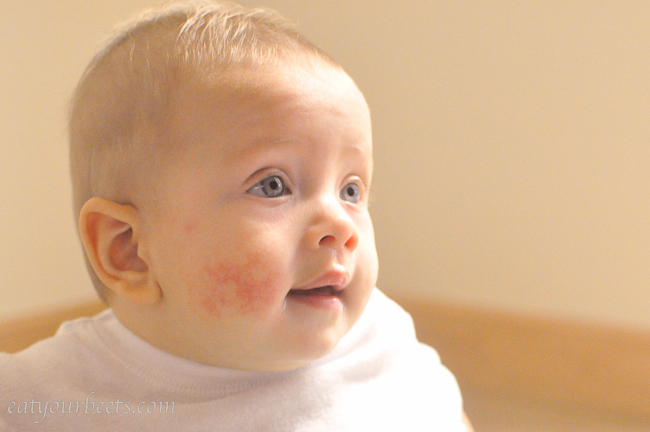
I was on the hunt for something that would help him. I signed up for a three-part fermentation class in my area. The first class was supposed to talk about bone broth, but the professor kept referring to this one particular diet. I had heard of the GAPS diet before, and asked her if this was what she was referring to. Her only response was, “You’ll have to come to the next class!”
When a mother is desperate to help her child, there is no stopping her. You can’t just dangle a carrot in front of me like that. I went home and learned everything I could about GAPS. Arthur fit the pattern of a GAPS child to a T.
What steps did you take to put Arthur on the GAPS diet?
When he was thirteen months old, we put him on the GAPS diet. It was really hard. My entire life revolved around preparing his food, feeding him, then feeding my other three children and my husband. He had severe die-off, which is why I recommend finding a practitioner to guide you through the process.
GAPS has several stages. We started Arthur on the first stage, where he only ate broth with meaty bones and vegetables for weeks. It went straight through him. He had severe diarrhea and other symptoms. BUT, within one week, his face [eczema] cleared up. That’s when I knew I was on the right track.

There are so many people who contact me for advice, but I simply don’t have the education or expertise to help. That’s why finding a community for support and partnering with a practitioner is so important. Our practitioner recommended supplements to help Arthur absorb minerals from the food he was eating. Arthur reacted to many foods that were GAPS-friendly, and didn’t react to other foods that were not. For example, he could eat a sweet potato (starchy vegetables are not allowed on GAPS), but he couldn’t eat a bell pepper.
How long did it take (on the GAPS diet) to see progress with Arthur?
When it comes to the human body, you can’t predict what’s going to happen. When you start the GAPS diet, it tells you to commit for a year to eighteen months. I made that commitment. The “hard part” of that diet— essentially being a slave to what he was eating—was so much easier than what he was going through.
It took two years on GAPS, but we believe he’s in a good place. That first year, we prepared every single meal. If our family ate out, he ate food we prepared at home. When we traveled, we pre-cooked every single meal and brought it with us. I was finally seeing progress, and I was too scared to take a step back.

Today, Arthur is five and the healing we’ve seen with him is immense. Before, he reacted to everything—cocoa, cinnamon, tomatoes, bananas, nut butters, you name it. He can literally have everything now! Although we keep him gluten-free, he’s accidentally eaten “real bread” at friends’ houses.
What advice do you have for other moms raising a family on a real food diet?
Just do the best you can, and give yourself grace. A mom is only as happy as her least happy child. You take on the feelings your children have. Just know in your heart you’re doing the best you can for your kid. Luckily, we have a very supportive family. When they physically saw progress with Arthur, they knew I wasn’t crazy.

As a family, we love food. The best thing you can do is be consistent. Always show your kids new vegetables in different forms. The key is to teach your kids to make good choices, so they make those choices when they leave the house.
You teach food photography on the side, and have two eBooks dedicated to the subject. What tips do you have for us amateur photographers?
When I cleaned-up my diet in Japan, I started taking pictures of my food. Bad pictures. A girlfriend and I were trying to give each other ideas by sharing our dishes. A friend had started a blog, and encouraged me to start one. I knew that if I wanted my blog to turn into anything, I knew I had to step up my game. I just worked hard, and learned as much as I could. In terms of starting out, the best thing you can learn is how to understand light. Learn the difference between great shadows and flat light. Practice as much as possible. Every shot you take gets you closer to the shot you want to be taking.
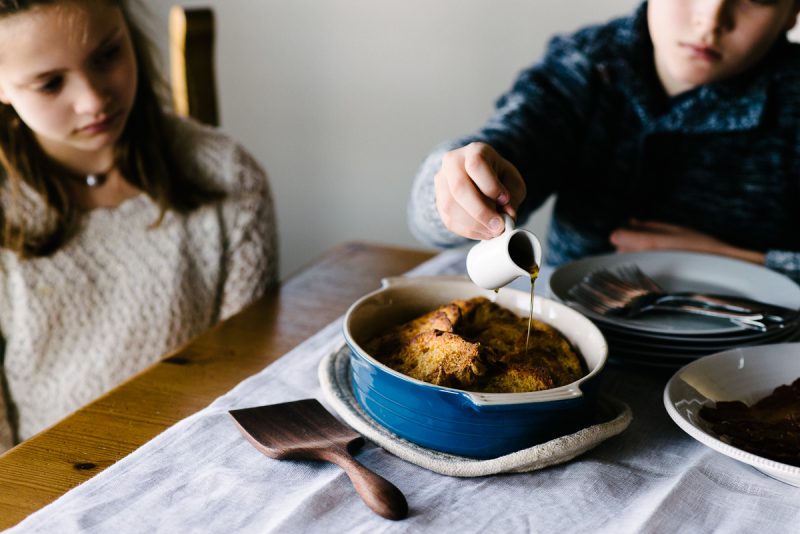
I have a hard time narrowing down my focus because I love trying new things. I see my blog as a lifestyle brand. There are things I love as much as recipes, and living a healthy life style is more than just food. I love safe skincare, fair trade, and ethical fashion. I love finding brands that align with my values.
What projects do you currently have in the works? Where can people find you?
Summertime is my time to spend with my kids. I love Instagram Stories, because it’s my way of saying, “Hey! I’m still here! I’m just with my family.” I do have one VERY exciting thing coming…but you’ll have to wait until fall to hear more! It’s all about food photography. Until then, you can check out my two eBooks on food photography.
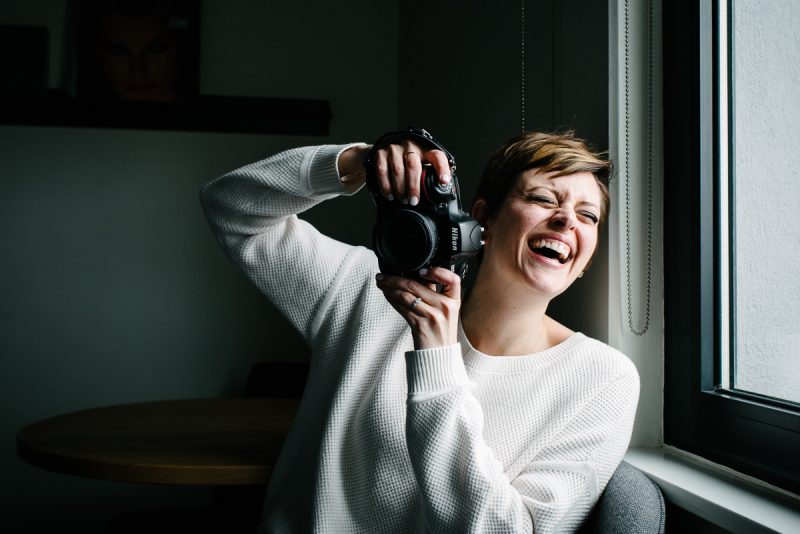
If someone comes across my blog, I hope the see me as a friend. Someone they’d want to hang out with. Someone they would enjoy learning more about—whether it’s a favorite lip gloss, a sangria recipe, or how I feed my kids fresh peas from the garden.
What is the one lesson you would like to leave everyone with?
My biggest takeaway—er, my biggest giveaway?—is to find good balance. By doing the best you can, you will always do better. People get caught up in diet dogma. I never want people to look at my family and assume we do things by the book.

I wish people could see our everyday life. Luckily I got my husband off diet soda, but otherwise he eats whatever he wants. We are a military family who moves a lot, and yes, we eat pizza when we move. Yes, my kids have eaten candy. Yes, there are chips in the house. Honestly, we’re just a real family who’s trying to get by.




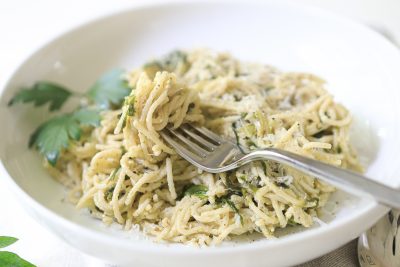





There are no comments yet.